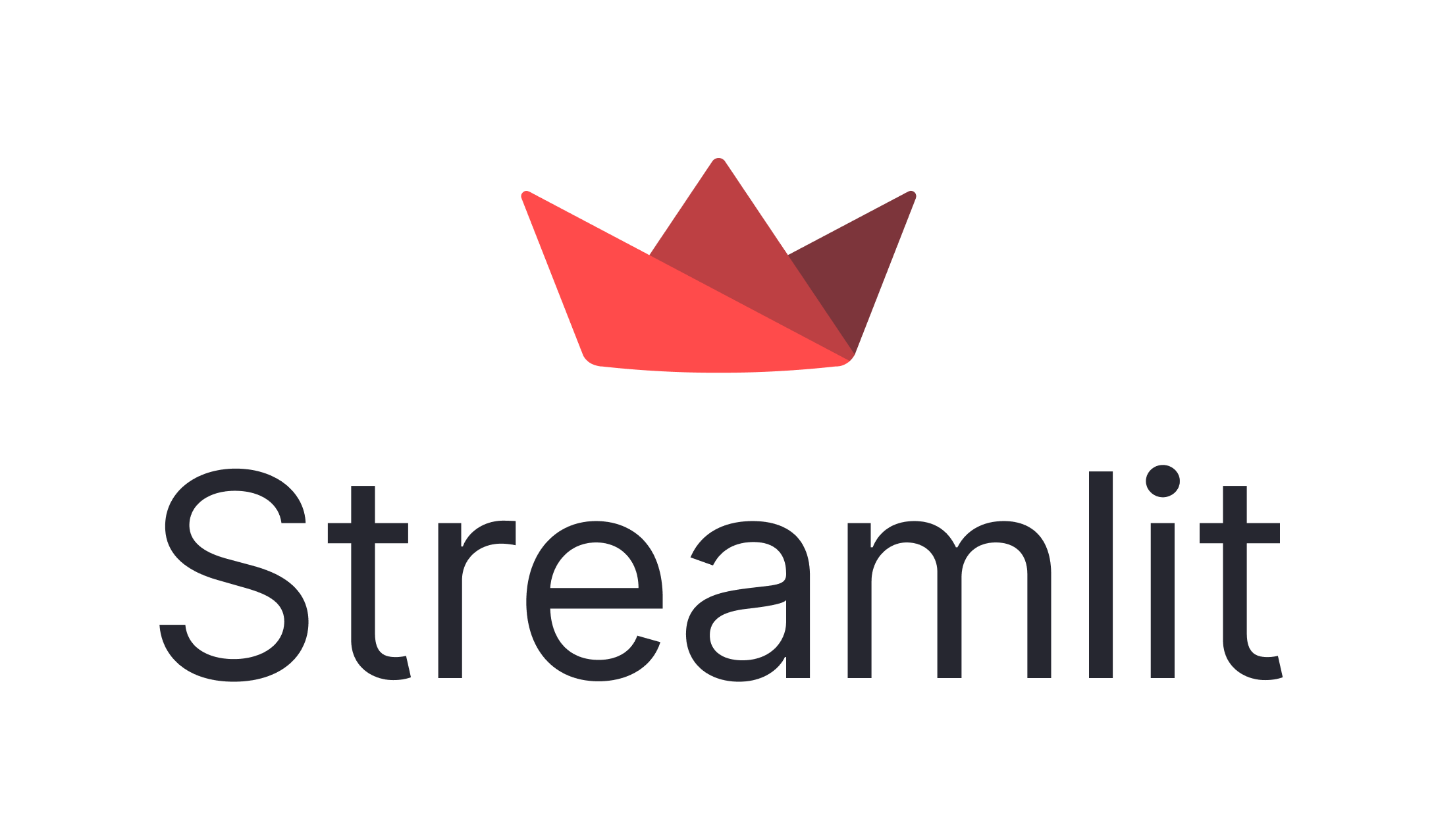Streamlit Basic Components
 Mohamed Abdelwahab
Mohamed Abdelwahab
Welcome to this blog post about the basic components of Streamlit, a powerful tool for creating interactive web applications with Python. This guide will introduce you to some of the essential components you can use to build your own Streamlit apps.
Table of Contents
Introduction
Introduction
Streamlit is an open-source Python library that makes it easy to create and share beautiful, custom web apps for machine learning and data science. In just a few minutes, you can build and deploy powerful data apps.
Text Elements
Streamlit offers several functions to display text in your app. Here are some of the basic ones:
| Function | Description | Example |
st.title | Displays a title | st.title('This is a title') |
st.header | Displays a header | st.header('This is a header') |
st.subheader | Displays a subheader | st.subheader('This is a subheader') |
st.text | Displays fixed-width text | st.text('This is some text') |
st.markdown | Displays markdown-formatted text | st.markdown('**This is bold text**') |
st.latex | Displays mathematical expressions formatted in LaTeX | st.latex(r'E = mc^2') |
st.code | Displays a block of code | st.code('print("Hello, Streamlit!")', language='python') |
Data Display Elements
Streamlit provides several ways to display data, including tables and charts:
| Function | Description | Example |
st.dataframe | Displays a data frame as an interactive table | st.dataframe(my_dataframe) |
st.table | Displays a static table | st.table(my_dataframe) |
st.line_chart | Displays a line chart | st.line_chart(data) |
st.bar_chart | Displays a bar chart | st.bar_chart(data) |
st.map | Displays a map | st.map(data) |
Input Widgets
Input widgets allow you to capture user input in your Streamlit app:
| Function | Description | Example |
st.button | Displays a button | if st.button('Click me'): st.write('Button clicked!') |
st.slider | Displays a slider | age = st.slider('Select your age', 0, 100, 25) |
st.text_input | Displays a text input box | name = st.text_input('Enter your name') |
st.text_area | Displays a text area | bio = st.text_area('Enter your bio') |
st.selectbox | Displays a select box | option = st.selectbox('Choose one', ['Option 1', 'Option 2', 'Option 3']) |
st.multiselect | Displays a multi-select box | options = st.multiselect('Choose one or more', ['Option 1', 'Option 2', 'Option 3']) |
st.checkbox | Displays a checkbox | agree = st.checkbox('I agree') |
st.radio | Displays a set of radio buttons | choice = st.radio('Choose one', ['Option A', 'Option B', 'Option C']) |
Media Elements
Streamlit allows you to display media like images, audio, and video:
| Function | Description | Example |
st.image | Displays an image | st.image('path/to/image.png') |
st.audio | Plays an audio file | st.audio('path/to/audio.mp3') |
st.video | Plays a video file | st.video('path/to/video.mp4') |
Layout and Control
Streamlit offers various elements to manage the layout and flow of your app:
| Function | Description | Example |
st.sidebar | Creates a sidebar for additional input widgets | st.sidebar.selectbox('Choose one', ['Option 1', 'Option 2']) |
st.columns | Creates a multi-column layout | col1, col2 = st.columns(2) |
st.expander | Creates an expandable/collapsible section | with st.expander('Expand me'): st.write('Hidden text') |
Conclusion
This blog post covered the basic components of Streamlit, which you can use to create interactive and user-friendly web applications. Explore these components to enhance your data apps and make them more engaging.
Happy Streamlit-ing!
Feel free to contribute to this repository or ask questions if you need any further assistance.
Subscribe to my newsletter
Read articles from Mohamed Abdelwahab directly inside your inbox. Subscribe to the newsletter, and don't miss out.
Written by

Mohamed Abdelwahab
Mohamed Abdelwahab
I’m dedicated to advancing healthcare through data science. My expertise includes developing user-friendly Streamlit apps for interactive data exploration, enabling clinicians and researchers to access and interpret insights with ease. I have hands-on experience in advanced data analysis techniques, including feature engineering, statistical modeling, and machine learning, applied to complex healthcare datasets. My focus is on predictive modeling and data visualization to support clinical decision-making and improve patient outcomes.